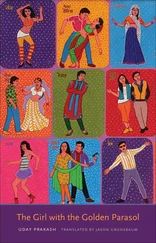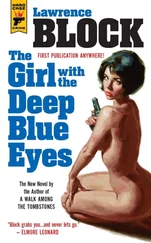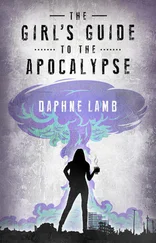VIDAL: I really don’t give a fuck. Look, am I going to sit and weep every time a young hooker feels as though she’s been taken advantage of?
MERONEY: I’ve certainly never heard that take on the story before.
VIDAL: First, I was in the middle of all that. Back then, we all were. Everybody knew everybody else. There was a totally different story at the time that doesn’t resemble anything that we’re now being told.
MERONEY: What do you mean?
VIDAL: The media can’t get anything straight. Plus, there’s usually an anti-Semitic and anti-fag thing going on with the press—lots of crazy things. The idea that this girl was in her communion dress, a little angel all in white, being raped by this awful Jew, Polacko—that’s what people were calling him—well, the story is totally different now from what it was then.
So I was a slut and an impediment to greatness to Polanski’s supporters. How about his detractors? Well, if Polanski supporters thought I was a slut, Polanski detractors thought I was pitiable. As a makeup artist said to me before I appeared on ABC’s Good Morning America to explain why I thought Polanski shouldn’t be extradited, “Oh, you poor, poor thing.” I know she was only trying to be kind, but was I a “poor, poor thing” because I’d been raped as a child? Was I still and forever to be a “poor thing”?
I told her I was okay, really. But I could feel her pity and didn’t like it.
Here too Nancy Grace was particularly memorable. The blond vampire who eats misery for breakfast was positively gleeful at the time of Polanski’s arrest. Polanski, she said, would “never see the light of day” again once he was extradited and sent away forever. Grace vilified his supporters and scoffed at the thought that there was any judicial misconduct in 1977, when she cross-examined Carmen St. George, a defense attorney, on her show in September 2009.
GRACE: There was nothing proven about an irregularity. In fact… the only thing that we know for sure, is that Roman Polanski, a famous Hollywood director, admitted under oath he raped a 13-year-old. We know that much…. So you`re saying because the case is old, because he’s been living it up in a mansion in Europe, that we should just forget about it, that that’s a problem, that Lady Justice should just pack her bag and go home?
That’s not what St. George was saying, but that didn’t matter to Grace. Later in the show she spoke with Dr. Evelyn Minaya, a women’s health expert.
GRACE: Young ladies and women through all points in their life that have been raped as children. This is a child, a thirteen-year-old girl. It affects them forever.
MINAYA: Forever. And not only that, the physical aspects of it also. Remember, she had anal sodomy. Do you know that that puts her at an increased risk for anal cancer in her future, let alone all the other psychological ramifications that there are with that, you can just imagine.
The show goes on in this vein. I was used to having my character maligned because of the rape. But now I was being told that because of the rape I was more likely to get cancer. Great. What’s next?
I wanted to scream at the television, I am standing right here, I can hear you!
On another show, Grace referred to me as a “weak victim” who couldn’t stand up for myself. She called herself a “victim’s advocate.” In other words, she needs a supply of victims to advocate for. No victims, no victims advocacy business. I can’t help you here, Nancy Grace. I was the victim of a crime—I am, and always will be, a rape victim. But I’m not a victim as a person. I’m a strong woman who chooses to identify herself by her strengths, her interests, her family, and her loathing of gadflies who want to appropriate her life for their own purposes. I’m not available to you, Nancy Grace; go victimize someone else.
And then there was that other drama vulture, Dr. Phil McGraw. I read that he said I had a classic case of victim’s guilt, and he’d like to help me. It’s that kind of patronizing attitude that perpetuates rape victims thinking they should have something to feel guilty about. Dr. Phil, you’re mistaking survivor’s pride for victim’s guilt. But there’s no money in survivor’s pride, is there? Thanks for the offer. I’ll pass for now, but if I ever feel the need to get help from a TV host, I’ll have my people contact your people.
• • •
On July 12, 2010, after nine months of house arrest, the Swiss Justice Ministry issued a statement guaranteed to make Nancy Grace’s head explode: “The 76-year-old French-Polish film director Roman Polanski will not be extradited to the USA,” the ministry said in a statement on Monday. “The freedom-restricting measures against him have been revoked.”
I was so glad, because the last few months had worn me out. Now, I hoped, the press would stop hounding me. I could put my Rape Girl costume away, and go back to my wonderfully ordinary life—my family, my animals, my horror films. (Some people enjoyed Civil War reenactments; my family and I were more into Zombie Apocalypse reenactments on Halloween.) I was even happy that Polanski was being released, though staying in that nice house in Gstaad wasn’t exactly Guantánamo Bay. It wasn’t over though. The Los Angeles County DA’s office continued bungling the case.
Before Cooley’s epic failure, this scenario must have seemed a slam dunk. Switzerland had turned over other fugitives from American justice in the past, and this case was open-and-shut. Well, not exactly. For one thing, Switzerland has very specific criteria for extradition. People can only be extradited if they have six months or more to serve on their sentence back in their native country, and the court was not convinced that Polanski had six months to serve once he returned. Of course, no one knows—it was the ambiguity of the sentencing that sent Polanski skedaddling in the first place—but the Swiss authorities noted that Polanski likely wouldn’t have more than six months because in the year Polanski was sentenced, not a single person in California serving time for unlawful intercourse served six months. In fact, few served more than two. Polanski was also in jeopardy because of his unlawful flight, but no one could predict what those sanctions might be. And even under California law, you can’t be sentenced until you’ve been found guilty.
The main reason for Switzerland’s refusal to turn over Polanski, however, was the DA’s refusal to turn over key testimony. In January 2010, Roger Gunson—who had been having serious health problems—gave testimony under seal to be used in case he was too sick to appear in court. Polanski’s team, as well as Larry and myself, wanted Gunson’s testimony handed over, as we believed it would reveal key information about Judge Rittenband and judicial misconduct back in the 1970s. It wasn’t clear how this might have affected the case, but I’m guessing it must have been pretty embarrassing to the Los Angeles County Superior Court.
Polanski’s legal team complained that the DA’s office was providing the Swiss authorities with “false and materially incomplete” information. Nevertheless, Los Angeles Superior Court judge Peter Espinoza rejected the defense lawyers’ request to unseal the testimony—and that pretty much ensured Polanski’s freedom.
Cooley was infuriated. “To justify their finding to deny extradition on an issue that is unique to California law regarding conditional examination of a potentially unavailable witness is a rejection of the competency of the California courts,” he said in a press conference. “The Swiss could not have found a smaller hook on which to hang their hat.”
Switzerland saw it differently. It looked like the United States had something to hide. It did. And it still does.
Читать дальше












